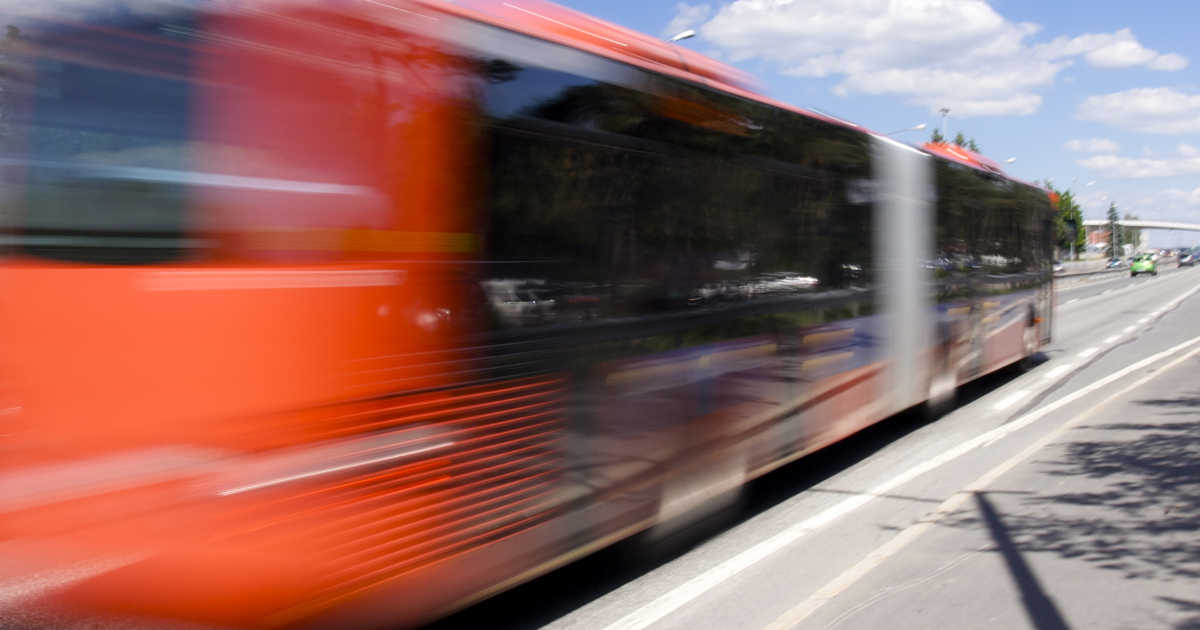Towards Defining a New, Forward-Looking BRT Concept

While Europe is busy defining its BRTs of the future, shouldn't Canada be leading the way? Here's an opportunity to demonstrate technological leadership.
Countering preconceptions
To hear some commentators on major public transport and urban development projects, you’d think that the concept of BRT (Bus Rapid Transit) wouldn’t meet the mobility needs of modern cities or rival rail solutions. Well, make no mistake: BRTs are still on the agenda all over the world and are recognized as a game-changing approach with under-exploited potential.
While the electrification of public transport networks is a necessity, increasing and improving the service offer is the crux of the matter for boosting modal shift.
The eBRT2030 project
It’s in this context that the International Association of Public Transport (UITP) is coordinating eBRT2030, a major European project designed to improve support for sustainable urban transport through proposing innovative solutions for electric BRTs. The project, which starts in January 2023 and ends in December 2026, brings together some 49 mainly European partners. It “aims to demonstrate the applicability of a new generation of eBRT systems in different urban contexts with innovative solutions that are economically viable and enhanced with new automation and connectivity functionalities” (UITP). In other words, the concept could be modernized to make it more attractive and competitive than ever.
The UITP has just published On the road to a concept for BRT (February 2024), a first report on this project that serves as a foundation for establishing the state of the art in the field. It is an excellent document for taking stock of the situation around the world and for understanding the experience gained to date. “This report wants to be the starting point of the eBRT2030 project as its first concrete step towards the definition of a new European concept for BRT that looks at the future. A future where public transport keeps contributing to the Paris Agreement and the [United Nations] Sustainable Development Goals, as the backbone of urban mobility and where citizens choose to use it because it is more convenient, comfortable, and efficient than private cars.” (Flavio Grazian, eBRT2030 Coordinator). Those involved in sustainable mobility and urban planning in North America would do well to take notice.
It’s important to emphasize that, when they are an integral part of larger urban planning projects, BRTs are also catalysts for urban development in the same way as rail projects1.
The relevance of BRTs and the move towards RRTs
With a coherent approach that combines the appropriate choice of vehicles, infrastructures that ensure quality of service and a mode of operation that prioritizes performance, it is possible to set up high-quality, economically viable and socially acceptable BRT systems. Nevertheless, in the face of a disproportionate enthusiasm for rail solutions, the implementation of truly efficient BRTs remains woefully underestimated by the political class. Here, every dollar invested must be maximized. We need to avoid one-size-fits-all (and pharaonic) approaches and focus instead on a set of solutions best suited to the realities of the cities and communities concerned, with a view to increasing as much as possible the offer in public mobility. And, considering the issues we face with climate change, we need to act quickly with the maximum impact.
Let's not forget the importance of resilient public transport systems. Recent experience in several cities reminds us of the weak point of rail systems: they present several single points of failure that can immobilize an entire line, or even an entire network.
It’s true that BRTs as we know them today have their limitations. But with recent technological advances, and in particular the roadtram concept proposed by Pantero and its partners, it is becoming possible and highly realistic to foresee transport systems that offer capacities broadly comparable to trams and several light rail systems, at a fraction of the cost and deliverable much more quickly. While everyone's attention is focused on electrification, we should be looking at how we can use technology to make our public transport networks more attractive, more reliable and more widely deployable.
This is our vision: the future of BRTs will inevitably be an evolution towards the concept of Roadtram Rapid Transit (RRT), at the convergence of electric buses and light rail.
Canadian leadership?
Considering our collective know-how and Canadian innovations, shouldn’t Canada be the North American leader in this field and, like Europe, draw up a national strategy for the development of a forward-looking BRT/RRT concept? On behalf of Pantero, I call on the Canadian Urban Transit Association (CUTA), the Canadian Urban Transit Research and Innovation Consortium (CUTRIC) and the North American branch of the UITP to join forces with stakeholders to forge this strategy in collaboration with the federal government and the provinces.
Let’s build the future of public transport!
Download the report On the road to a concept for BRT (UITP, Feb. 2024).
Visit the UITP project website eBRT2030.eu
To learn more about our Roadtram Technology, visit our microsite www.roadtram.com
__________- More Development for Your Transit Dollar: An Analysis of 21 North American Transit Corridors; Hook, W. and al.; Institute for Transportation & Development Policy (ITDP), November 2013.
References available in our Document Centre.
Share on social media and join in the discussion


